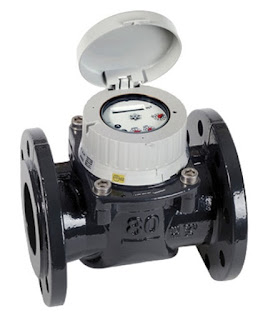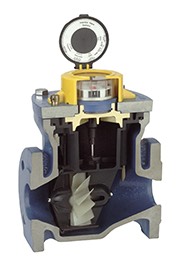 |
| Turbine Flow Meter (Niagara WPX) |
Turbine flow meters use the mechanical energy of the fluid to rotate a turbine blade in the flow stream and provide precise and accurate flow measurement. The flow impinging upon the turbine blades causes the rotor to spin. The angular velocity of a turbine flow meter is proportional to flow rate. The rotational velocity of the turbine is interpreted as an electrical frequency output through the use of magnetic pick-ups. As each turbine blade passes by the magnetic pick-up coil, a voltage pulse is generated which is a measure of the flow rate. The total number of pulses gives a measure of the total flow which can be totalized with a maximum error of a single pulse.
The relationship of the angle of the turbine meter blades to the flow stream governs the angular velocity and the output frequency of the meter. The sharper the angle of the turbine blade, the higher the frequency output.
Easy to maintain while also boasting reliability, turbine flow meters are known to be cost-effective solutions that make an ideal device for measuring flow rate. Aside from excellent rangeability, they also provide high response rate and high accuracy compared to other available types of flow meters. Turbine flow meters are sturdy, need very little maintenance, and seldom exhibit much deviation in performance.
These meters are used in multiple industries to reliably measure the velocity of a variety of liquids, gases and vapors over a very broad range of flow rates, temperatures, and viscosities. Turbine flow meters are used to provide measurement information in crude oil production, chemical processing, blending systems, tank storage, product off-loading, product loading, and many other applications across many industries.
Advantages
- Simple and durable structure
- Easy to install and maintain
- Low pressure drop
- Operate best in applications with fast, steadyflows
- Operate under a wide range of temperatures and pressures
- Require straight run of pipe upstream and downstream
- Need constant back-pressure
- Best for lower fluid viscosity
- Bubbles in liquids affect accuracy
- Bearing wear
(877) 768-1600

